How to Pass Your Driving Test: Tips to Help You Out
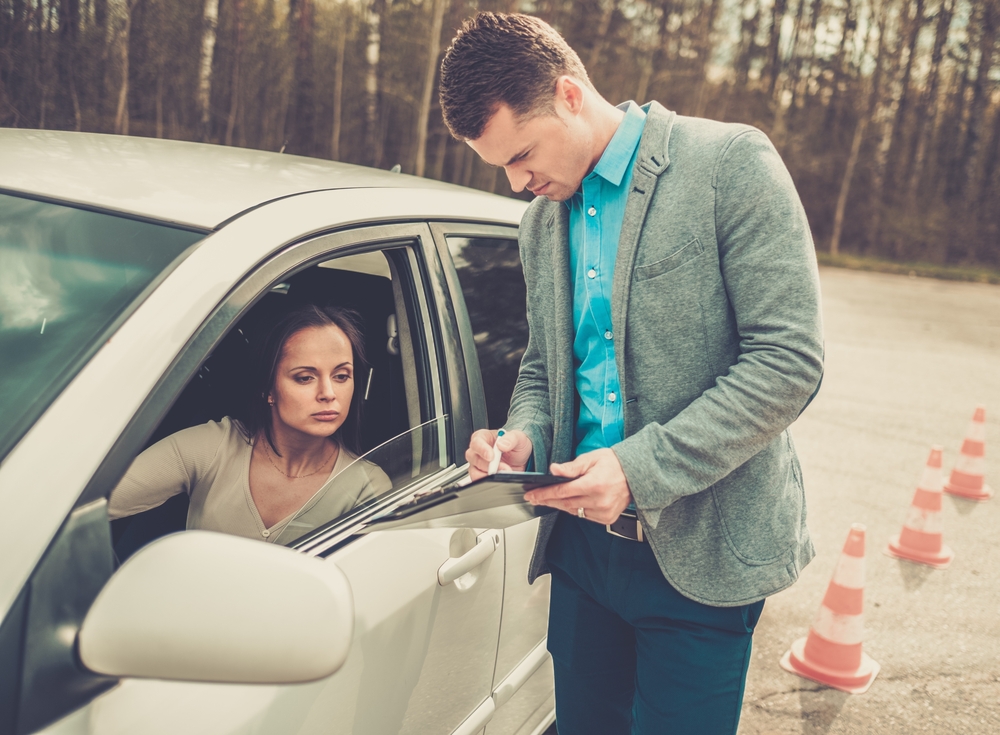
Getting your driver’s license is an exciting venture and life changing experience, but it is also a big responsibility. Taking the driving test (also known as road test and behind-the wheel test) can be a little nerve wracking, but there are ways you can prepare that will help ensure that you pass that test, with flying colors, on the very first try. Here are some helpful tips that will make passing your driving test much easier and will help you pass it the first time. Good luck!
How to Pass Your Driving Test
The most important step to pass your driving test is to show up prepared. However, here’s a more in-depth guide!
Passing your driving test shouldn’t be hard
Be fully prepared in days, not weeks with Premium.
Before You Schedule Your Road Test
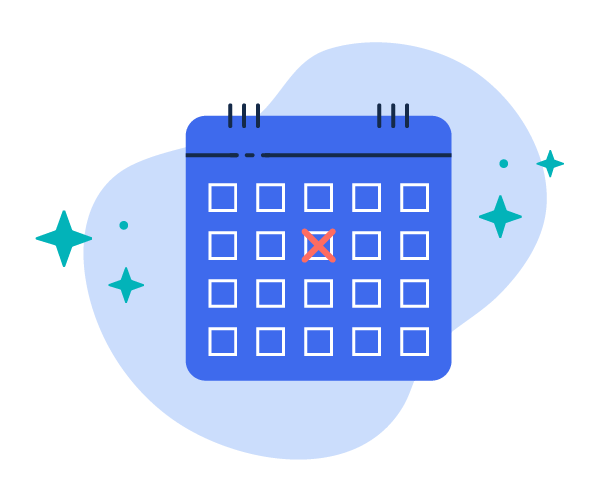
Get lots of practice. Use that learner’s permit of yours to the full if you have one. Feeling comfortable behind the wheel of your car is one of the best ways to prepare for your test. Try to practice as much as possible in the vehicle that you will take to your actual test. Each car drives a little differently and it is a good idea to be comfortable in the car you will be using. Keep this in mind when preparing for your driving test. While driving around with whoever is your driving partner to help you during your learning phase (a friend, colleague or your driving instructor), have them grade you. Let them know this is a good time to be brutally honest. Ask them to note down every incorrect lane change, every turn signal you failed to indicate, every blind spot check you didn’t perform, etc. Then, take the feedback and constructive criticism as helpful not insulting. Pro Driving Tip: Empty parking lots make great drivers test practice locations. Office parking lots are usually deserted on the weekend and are great for practicing. If you can, find a couple of orange cones to borrow so that you can set up a parallel parking area.
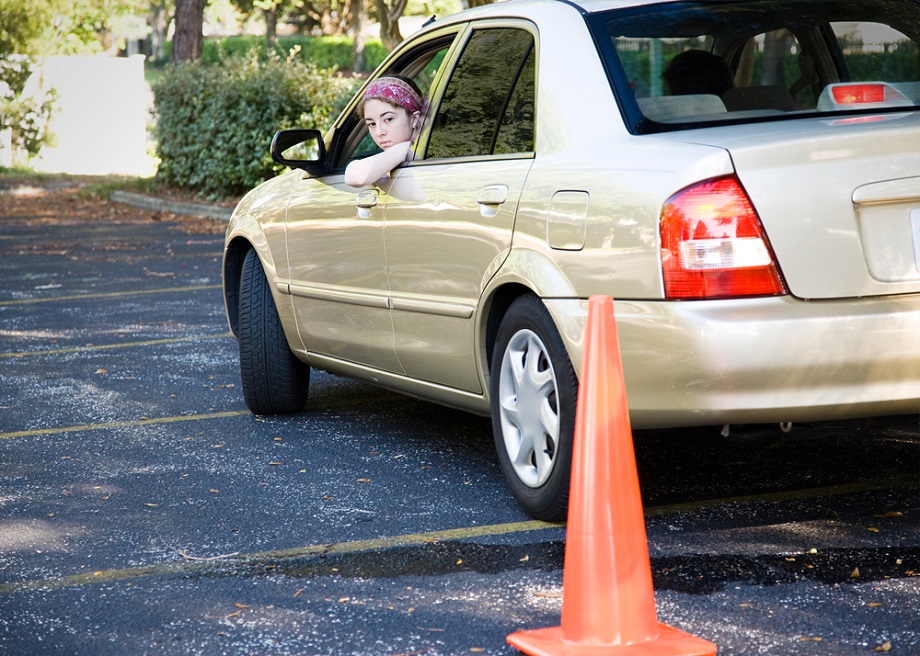
Cones can be very helpful when practicing all kinds of parking and creating an obstacle course Once you schedule your test, familiarize yourself with the testing area. Generally the driving test will be completed on the roads that are very near to your testing site. Spend some time driving around the area. Pay special attention to the speed limits, road signs and potential hazards. This way you will already know what to expect when you go in for your test. You can also employ driving training and practice test companies to help you. While it may cost you a little bit of money, it can be worth the training, knowledge and actual road experience you gain, not to mention that these are often taught by those who are aware of what the actual driving test will be like. This prepares you better, plus gives you a feel for what to expect the day of the road test. Consider this expense an investment into your driving success. Study the rules! The only thing possibly as important as actual road time is understanding the rules and laws of the roads. Just because you aced the written part of the permit test that dealt with these same details doesn’t mean you have everything memorized well enough to also breeze through the driving test. Besides, you could also freeze up and forget all those guidelines you read before. So, the more comfortable you are with being certain you know the rules of the road, the more likely you are to recall the rules while behind the wheel. It also means these rules will begin to become second nature and you, eventually, won’t even have to think about the laws.

Free signs and situations practice tests can help you refresh the rules of the road and make correct decisions during the test (Driving Tests) If you can, take your test in the suburbs rather than in the city. Tests are harder in the city due to increased traffic, pedestrians and traffic signs. Pro Driving Tip: Ask anyone and everyone for advice and tips for the road test and driving in general. Maybe you know someone who recently took the test. If so, pick his or her brain about what to expect and what to watch for, especially if that person can remember any parts of the test that could be tricky or extra hard to do.
The Night Before

- Check your tires and make sure they are in good condition.
- Top off your wiper fluid, just in case, and clean your windshield. Make sure that there are no cracks in the windshield.
- Adjust your mirrors so that you can easily see various road hazards. During the test the examiner will be watching to see if you use your mirrors properly, so make sure that you are ready.
- Review your hand signals and practice them until you are confident. This will be one of the first things that they will ask about on the test.
- Gather up your test paperwork and put it all together by the front door. At the very least you will need your permit and proof of registration and insurance for your vehicle. Additional paperwork may be needed. Make sure that it is ready to go and in a place that you won’t forget it.
- If you need corrective lenses to drive be sure to find them and be sure to take them to your test.
Pro Driving Tip: Do a little review and maybe even a practice driving run. Then, be easy on yourself. Make sure you eat well and go to bed at a decent hour so you can get a good night’s sleep. This carries over into the next morning and day.

Stay positive and set yourself up for success
On the Day of

Take a vehicle that you are comfortable driving and that you have had plenty of practice in. It is always easiest to pass your test in an automatic. If you plan on driving a manual, wait until after the test.
- Make sure that you understand the controls of the vehicle that you take to the test. For example, you should know how to easily turn the headlights on and off. If it starts to rain, use your wipers and if it stops raining, turn them off. Using the car’s controls properly will help to show that you are confident on the road and ready to have your driver’s license.
- Adjust your mirrors and then leave them there. Make sure that you don’t adjust or move your mirrors during the test. Here are some ideas that will help you adjust your mirrors properly.
- Plan on getting to the test early. This will help you to have time to relax and prepare mentally before you actually have to take the test. Wear your seatbelt. Put it on as soon as you get in the car, before you start driving.
- During the test, pay attention. Watch specifically for school zones, parks and other areas where the speed limit might be reduced. Obey all road signs that you see, especially speed signs.
When driving, hold onto the steering wheel with both hands at all times. Use proper hand placement and focus throughout the test.
There are 2 acceptable ways to place your hands on the steering wheel. Some people choose to keep their hands at 10 and 2 and others opt for 9 and 3. The reasoning between choosing 9 and 3 is that in the event of an airbag deployment you will be safer and less likely to be hit by your own hands.

NHTSA recommends the “9 o’clock and 3 o’clock” position
Holding the steering wheel is so important during the test. Don’t let them go of the wheel when you are turning. It is not appropriate to let the wheel slide between your hands. Instead, hold it firmly at all times, even when turning.
- Don’t stop too closely to the vehicle in front of you when you need to come to a stop. As a general rule, you should be able to see the tires of the car in front of you.
- During the test, do not cross solid lines as this will result in an instant and automatic fail.
- Paying attention to all the road signs is critical if you want to pass your test. On many driving tests, you will be taken through an intersection with a no right turn on red sign.
- When you come to a four way stop, pay attention to who arrives first. When you come to a four way stop, it is always first-come, first-served. If you arrive at the same time as the car across from you, let them go first – especially if they are turning.
- When driving, try to stay in the right lane as much as possible. When you make a left hand turn into the left lane, wait until it safe and then carefully change lanes into the right lane. Always look over your shoulder before changing lanes and be sure to use your blinker. Your test administrator will let you know if you should drive in any lane other than the right lane.
- Don’t be afraid to use your horn. Of course, this doesn’t mean that you should use your horn excessively. If you get into a situation where a car is too close or is trying to come into your lane, use your horn and let them know.
- Focus on your speed. Maintaining a constant speed is important. Watch for speed signs and always observe them. Remember that school zones and children’s play areas may have a reduced speed, so pay attention.
How to Properly Change Lanes
Only change lanes when you are absolutely certain that it is safe. If your test administrator asks you to change lanes, make sure that it is safe first. Never cut anyone off or change lanes without looking. The following video suggests a pattern to memorize while changing lanes:
Since your driving test is a real experience on real roads with other drivers, you need to be prepared for anything. Paying attention and remaining alert will help you to be aware of obstructions that are out there and to respond appropriately.
Sometimes it can help you to drive more carefully and smoothly if you envision a large glass of water sitting on your dash. As you drive, make sure that you don’t tip over this imaginary cup of water.
When it is time to change lanes or complete various skills, mentally walk yourself through them step by step. This will help you to focus during the test and to complete each task to the best of your abilities.
Pro Driving Tip: Some people find that having the window down a little can really help you to be aware of dangers and other vehicles during the test. Sometimes you can hear another car coming before you can see it, and having your window down might give you an added advantage.
Pay Attention to Your Speed
Paying attention to the speed limits is absolutely critical if you want to pass the test. Your driving test isn’t a race, and driving slowly and carefully will help you to pass.
While you shouldn’t drive too fast, you also need to focus on not driving too slow. Drive the speed limit. Driving over or under can result in lost points on your test.
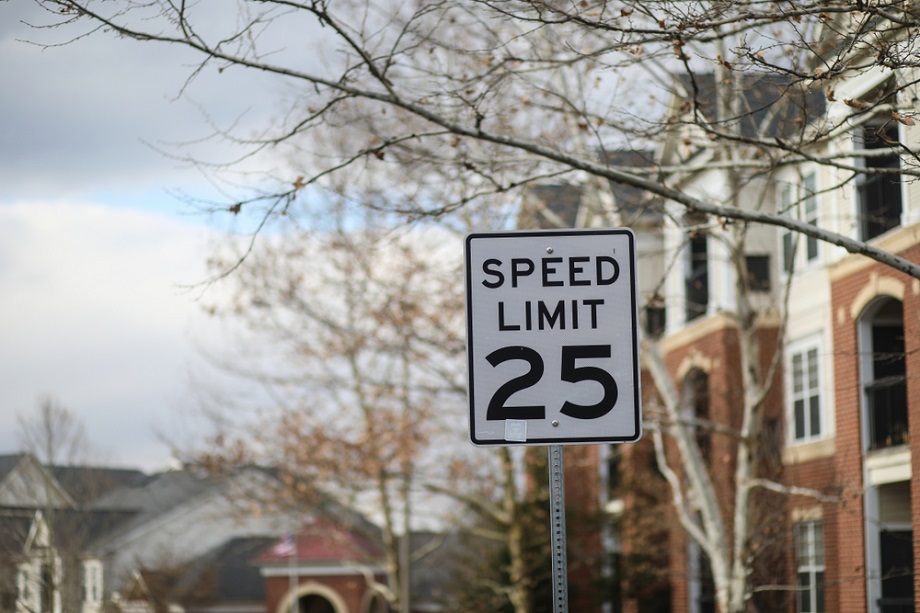
You should keep working on noticing speed limit signs on the road
- Don’t be afraid to look at your speedometer. Periodically glance at it throughout the test and keep the proper speed limit in mind at all times.
- It is important to drive a constant, smooth speed throughout the test. Speed up slowly and slow down well before you need to. Speed limits do change, so watch for signs or indicators that you need to adjust your speed.
- It is better to be safe than sorry. To make sure that you don’t speed, try driving a little slower than the speed limit. For example if the speed limit sign says 50, you might want to drive 45. Don’t drive any slower than this though.
- During the test you can fail for breaking ANY laws. Obeying the speed limit is critically important if you want to pass your test.
Be Careful When Backing Up
- When backing up, make sure that you look over your shoulder. Also look to the left and to the right. Make sure that there is nothing in your way before you start moving.
- Use your mirrors. Your test administrator wants to see you use these aids to safely back up.
Best Practices When Making a Turn
Using your turn signals is important for all your driving test maneuvers. It helps let other drivers know what you are planning on doing. Make sure that you turn your turn signal on plenty of time before you are actually going to turn. This will give other drivers a chance to notice and plan accordingly.
- Make sure that you don’t use your blinker when you don’t need to and that you don’t turn them on too early. This can confuse other drivers.
- When taking your test, use your turn signal any time that you are going to turn the wheel of your car unless you are following a curve in the road. You should even signal before turning into your parking space at the end of the test.
- Always check your blind spot when changing lanes. It is a good idea to check over your shoulder around the same time that you turn on your signal. If it is clear you can change lanes, if not – wait until you can safely change lanes. Keep your signal on until you are safely in your new lane
When making a left hand turn, make sure that you do not turn your wheels while waiting. Instead, pull up to the junction, wait until it is safe to turn, and then turn your wheel as you make the turn. Check here how to yield correctly to pass the exam:
- When making a right hand turn, stop before you turn if necessary.
- If you turn right, make sure that you turn into the lane that is the furthest right. If you turn left, turn into the lane that is the furthest left. If you need to be in another lane, wait until it is safe and then signal and change lanes.
- Take turns slowly. If you are going to be turning, you should slow down.
Pay attention to traffic when turning. If you can’t get your vehicle into the lane and up to speed before the oncoming cars arrive, wait until you can. Other vehicles should never have to use their brakes to accommodate your turn.
Pro Driving Tip: Make sure that you use the appropriate blinker when turning. Flick your signal up for right hand turns and down for left hand turns. A clever way to remember which is to think about the word “upright”.
Be Aware of Your Surroundings
Did you know that your test administrator is going to be watching you to see how well you observe and interact with other vehicles? Make sure that you pay attention and that you use your mirrors.
- Always check your blind spot before you signal to change lanes.
- As you approach intersections, scan them with your eyes quickly. Look for children, other vehicles and anything that could potentially become a danger. Always scan the intersection before you enter it.
- Use your mirrors. As you drive, glance briefly into your mirrors every 5 seconds or so. You should also check your mirrors after every turn and quickly check your rearview before you put on the brakes, especially if it will be a sudden braking.
- Watch for children, pedestrians, bicycles and motorcyclists. Make sure that you drive safely when you are around them.
- Traffic signs are very important. Make sure that you watch for them and that you follow their instructions.
- Your peripheral vision will help you to notice hazards before they become a problem. Make sure that you use it and pay attention to what is going on all around you, not just in front of you.
Pro Driving Tip: As you drive, look as far up the road as you can. Pay attention at all times.
Considerations When Coming to a Stop
Make sure that you come to a complete stop at all junctions. Never make a rolling stop since this is unsafe and illegal.
- When you come to a stop at a junction, make sure that you do not stop too far back. Instead, you should stop right at the point where you can no longer see the stop line. Do not stop before or after this line. The following short video guide will help you stop right where needed.
- When you come to a stop, wait at least 2 or 3 seconds before you start moving again. When you see a yield sign, make sure that you slow down and look carefully before proceeding.
- Make sure that you come to a stop before you exit a driveway onto the roadway.
- When you come to a stop at a stop line, make sure that your front bumper is behind the line to avoid creating an obstruction for other drivers.
- Since it can be difficult to judge where to stop, start stopping well before you get to the little white line. It is better to slowly inch forward than to have to put your car into reverse because you overshot the line. This can result in an automatic fail.
- Make sure that you don’t stop unless you need to. This can create problems with the cars behind you. For example, if you are at a green light and turning right, you shouldn’t stop. Instead, slow down and carefully yield as you enter the junction.
- While you may not be asked to use your emergency brake during the test, make sure that you know how to use it, just in case.
- Pay attention when coming into a junction with traffic lights. It is a good idea to put your foot gently over the brake pedal so that you are ready to slow down should the light change.
- If you are asked to parallel park during the test, make sure that you put your car into park once you are in the space.
- Don’t pull too close to other cars when stopping. You need to be able to see their rear tires. If you want to play it safe, you should be able to see a little bit of pavement as well.
Pro Driving Tip: Never slam on your brakes or brake suddenly. Instead, pay attention to reasons that you will have to stop or slow down so that you can brake gradually. This is much safer and will reduce the chances of your getting rear-ended.
Tips When Making U-Turns and 3 Point Turns
Many drivers find that they are asked to do a 3-point-turn rather than parallel park on their test. Since you never know, make sure that you are comfortable doing both.
- When doing a 3-point-turn on your test, make sure that you signal before completing every motion.
- Always look both ways before you back up. Be aware of what is going on around you and don’t do the 3-point-turn until you are certain that you can complete it before oncoming traffic arrives. The following video will help you complete a 3-point-turn easily:
- Avoid U-turns during your driver’s test unless you are specifically asked to do one. If you are asked to do one, make sure that it is legal and that there are no signs asking you not to U-turn.
Pro Driving Tip: Be very careful when doing a U-turn and make sure that you have plenty of time to clear the turn before the other cars will arrive.
What To Do When Approaching a Yield Sign
If you are approaching a yield sign and there is a car on your right approaching, make sure that you let them go first. Right of way is critical on your driving test. Do not violate it, even if another car indicates that you should go. It is better to be honked at for driving correctly during your test than to fail for making other cars happy. The only person that you need to please is your test administrator. Check here what double yield signs mean:
- Don’t come to a stop at a yield sign unless it is absolutely necessary.
- Make sure that you slow down for each and every yield sign.
What To Do When Approaching a Stop Sign
During your test you will encounter 2-way, 3-way and 4-way-stops. Make sure that you know what to do at each type of stop and that you handle each properly.
- When you approach a stop sign, make sure that you come to a complete stop BEHIND the line. But don’t stop too far back. You should be right at the line with your front bumper just behind it.
- Stop for at least 2-3 seconds at each stop sign before moving again.
- Do not come to a rolling stop since this can result in an automatic fail.
- Sometimes you will have to stop and then roll forward to see if it is safe to proceed into the junction. When doing this, first stop behind the line for at least 3 seconds, and then slowly roll forward. If you need to stop over the line until it is safe to proceed, this is fine as long as you came to a complete stop behind the line.
- When you come to a stop, make sure that you check in both directions and that you check all of your mirrors.
Lights and Intersection
If the light is yellow or red, stop. Don’t try to hurry into an intersection to save time. You are taking your driver’s test, not participating in a race.
- When the light turns green, look before you start to go. Make sure that there are no cars or pedestrians in the intersection before you go.
- If you are turning right on red, make sure that you come to a complete stop first. If the light is green, slow down and look carefully, but don’t stop.
- When you are waiting at a stop sign or stop light, keep both hands on the steering wheel.

Taking your hands off the wheel, even for just a second, can result in an automatic fail
- Make sure that you can see the back tires of the car in front of you when you stop at a light.
- Don’t keep rolling forward at the light. Come to a complete stop in a safe location and then wait for the light to change before moving again.
- Always be careful when going through intersections. They can be dangerous, even when you have a green light. Watch for potential dangers and proceed carefully.
Recognizing Your Blind Spots
Your test administrator will be watching to make sure that you are aware of what is going on all around your vehicle. Make sure that you pay attention to your mirrors, that you look over your shoulder and that you are aware of what’s going on around you, not just in front of you.
- Make sure that you look over your shoulder before changing lanes and before turning left.
- When checking mirrors or looking over your shoulder, make sure that the motion is obvious. It is important that the test administrator is aware that this is happening.
- One way to show that you are actually checking is to move your head. Don’t just move your eyes since the test administrator can’t always see this.
- Don’t just rely on your mirrors. Make sure that you are also looking over your shoulder.
- Check your mirrors often. You should ideally check your mirrors quickly every few seconds.
- Your test administrator wants to see you checking over your shoulder. It is important to do this check every time you leave a parking spot, change lanes or prepare for a turn.
Pro Driving Tip: Don’t make the mistake of only checking your mirrors. An over-the-shoulder check is important, especially if you want to pass your test.
What To Do When Parking
Practice your parking skills a lot before the test. This way you will be able to confidently park each and every time that you need to.It is important to park properly on your first try. This is why practice is so important.
- If you are parking on a hill make sure that you get close enough to the curb (use your mirrors) and then slowly let your tires hit the curb before you stop and put the car in park.
- When parking, make sure that you take it slowly. This doesn’t mean hardly moving as your proceed into the parking spot. What it does mean is taking your time and parking using an appropriate and safe speed.
- When you parallel park, make sure that you put the car into park once you are into your space.
- Use your parking brake when parking. This is easy to forget, especially if you drive an automatic, but is very important on the test. Before starting the car again, make sure that you disengage the parking brake.
- Make sure that you know how to parallel park. Some test administrators won’t ask you to do this, but some will. Practice until you can do it easily and get into your space on the first try. It isn’t worth failing your test because you didn’t take the time to learn this skill. Plus it is an important skill to have once you start driving on your own.
- When parallel parking, make sure that you don’t hit the curb, but that you do get close enough to it.
- Angling your tires when parking on a hill is very important. Review this information carefully so that you will instantly know which way to angle your tires. Remember that the needed angle changes depending on whether you are parking uphill or downhill.
- When parking, don’t be afraid to take your time. The test administrator isn’t going to penalize you for going slowly as long as you are safe and aware of the traffic around you.
- When parking in front of a store or a large glass window, you can use this to gauge how close you are to the curb and other cars. This is a great added support that you can use in addition to your mirrors.
Parallel Parking Instructions
Before attempting to parallel park, look at the car in front of you and gauge its size and how close it is to the curb. This will help you to properly position your car.
When making your approach, slow down and check your blind spot. Then match up your right side mirror with the other car. Now you are ready to park.
Make sure you check over both of your shoulders just to make sure that there is nothing in your way. Watch for cars, pedestrians and especially – children playing.
Here is a step by step guide that may help you learn how to parallel park.
- Slow down and signal that you will be entering the space.
- Line up your mirror with the car that will be in front of you.
- Check over both of your shoulders.
- Put your vehicle into reverse.
- Turn your steering wheel to the right.
- Slowly release the brake and start pulling into the spot.
- Keep watching over both shoulders.
- When you can see the closest car’s taillight in your windshield push on the brakes again.
- Turn your steering wheel completely in the other direction.
- Check over both shoulders. Keep your eyes open as you continue to make your way into the space.
- Put your car into drive and pull into the space.
- Place your vehicle into park and pull up your parking brake.
Watch the following video to memorize parallel parking steps:
To get out of the parking spot that you have parallel parked in, here are some helpful steps to follow.
- Place your vehicle into reverse.
- Back up until you can see the rear tires of the car in front of you.
- Signal left and look over your shoulder and around for potential hazards.
- Turn your steering wheel as far as you can toward the left.
- Move forward slowly until you are out of the parking space.
Back Parking (a.k.a. Reverse Parking. Backing into a Parking Spot)
Here is a step by step guide to help you when backing into a parking space during your driver’s test.
- Find the spot that you are going to back into.
- Signal and then survey the area looking for other vehicles.
- Make sure that your vehicle is straight.
- Put your car into reverse.
- Make sure that you look behind you as you carefully reverse into the parking spot. Go as slowly as you need to in order to be safe.
- Check the lines on the side of the parking space to make sure that you are properly aligned and ready just as needed.
- Put the vehicle into park and be sure to use the parking brake.
When backing into a parking spot, take your time. Make sure that you look behind you and that you use your mirrors. Your side mirrors will be especially helpful in gauging whether or not you are lined up with your parking spot.
Things to Consider When Parking Uphill or Downhill
Here is a step by step guide to help you master uphill and downhill parking for your driver’s test. Remember that practice is key so be sure to get plenty before you go in for your test.
- Find your parking spot. As you find the spot pay attention to the amount of space that you have and whether or not there is a curb.
- Signal, check over both shoulders and slow down.
- Pull your vehicle up to the right shoulder as closely as possible.
- Put on your parking brake.
- Angling your wheels is very important on your driver’s test. If you are parking uphill turn your wheel as far away from the curb as possible. If you are parking downhill angle your wheel toward the curb.
- Slowly let your tires roll until they rest on the curb gently.
- Put on your parking brake.
If there is no curb it is best to always angle your wheels toward the shoulder whether you are parking uphill or downhill.
Make sure that you engage the parking brake every time that you park on a hill. The following video gives an overview of different situations that might arise while parking uphill and downhill:
What To Do When Approaching a Railroad Crossing
Be sure to look both ways before crossing a railroad.
Tips for Driving Through Corners Safely
Slow down before turning a corner. There are a few reasons for this. One is that it will help you to remain in better control of your vehicle. Another reason is that you cannot see what is on the other side of the corner and you need to be able to stop quickly if necessary.
How To Interact With the Test Examiner
Your test examiner is here to help you. If you don’t understand a question or a direction, make sure that you ask.
As a general rule, focus on the test, not making conversation with your examiner. Talking too much will distract you from the many things that you need to focus on to pass your test.
Weather Considerations
When the weather is bad, you need to drive more slowly. Simply tell the examiner that you are going more slowly due to the bad weather.
What To Do When Encountering Pedestrians
If you turn in a crosswalk and there is a pedestrian in your crosswalk, you will automatically fail, even if they are clear on the other side of the road. Don’t enter a crosswalk unless there is no one in the crosswalk.
- Look for people at crosswalks carefully.
- Pay attention to the people standing on the corners as well. These people can quickly decide to enter the crosswalk so you need to know what they are doing as well.
When taking your driving test, make sure that you always yield to pedestrians even if they are jaywalking or doing something that they shouldn’t be doing.
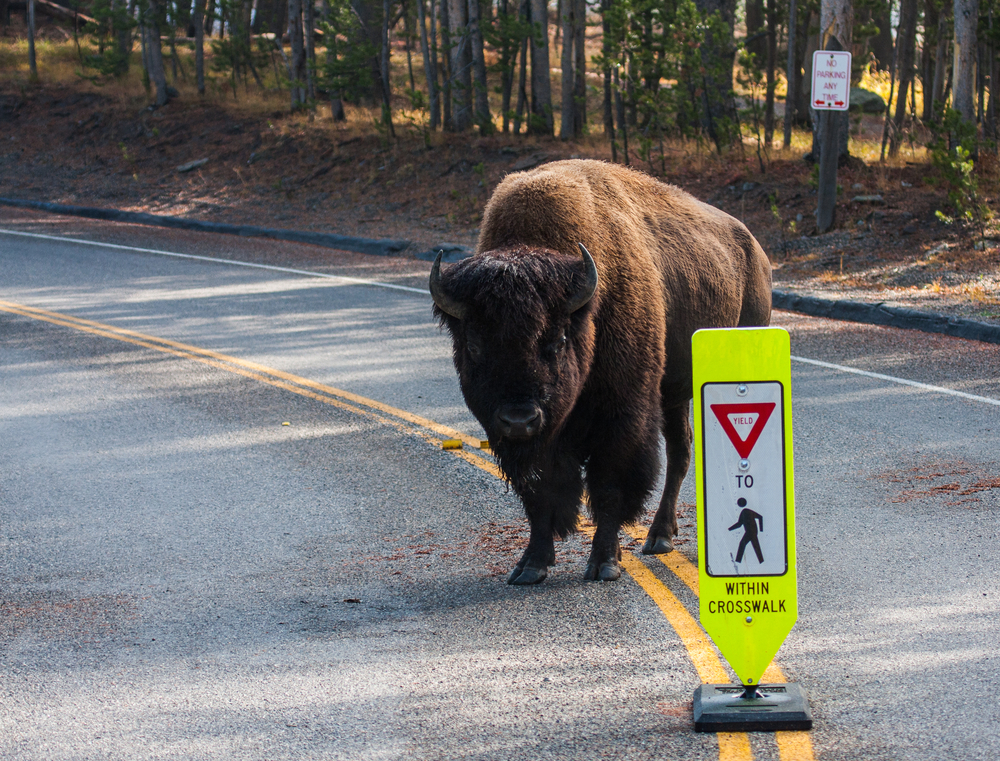
Jaywalkers are always annoying but yielding to them is the only possible solution
If you see a pedestrian, acknowledge them so that the examiner knows that you see them. You might want to slow down a little or mention the pedestrians to your test administrator.
How to Combat Nervousness
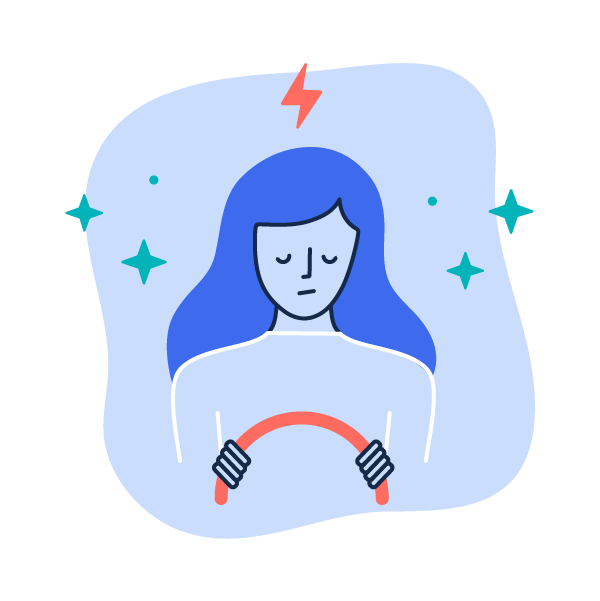
Be calm and focus on your driving, not on the test. It may help to imagine that you are in the car alone practicing rather than taking your test. Relax – it is only a driving test. Fight your fears. While it may be stressful, you will do much better if you learn to relax during the test. Try to have fun during the test. You have come a long way in preparing for your license and you are almost there. Look forward to getting your license and celebrate how far you have come.
- Try not to get too nervous. If you get nervous, you might make a simple mistake that could cost you the test. For example, you could be told to turn left and accidentally turn right.
- Be confident and drive like you know what you are doing. It is also important to be yourself.
- Be alert and aware of what is going on around you. If you watch the road, you will have less time to focus on your nerves.
- Know your vehicle. If you want to do well on your test, make sure that you practice in the vehicle that you will taking to the test. This is very important.
- Arrive to the test with plenty of time to spare so that you can collect your thoughts. You will be much more nervous if you are rushing to get to your test or if you are running behind schedule.
Envision you are with someone less ‘intimidating’ than the examiner who is administering the test. It can be easy to suddenly feel like nothing more than a bundle of nerves when under the close supervision of an authority figure. It doesn’t help when one is giving you a test that can be equally nerve wracking. So, pretend you are actually just in the car with your dear, sweet grandmother who would have nothing but praise for you or imagine cheering friends at the back seat!

Relax and envision you are driving with your granny
Afterwards: General Tips for Successful Road Experience

Try to avoid turning left in intersections that do not have protected turns until you get a little more practice behind the wheel. As you get more practice, you will be better able to judge the speed of oncoming vehicles.
- Don’t assume that you know what other drivers are going to do. For example, if you see a driver with the turn signal on, all you really know is that their turn signal is on. They may decide to turn and they may not. Drive defensively and always be on the lookout for other drivers.
- Wear your seatbelt at all times and always make your passengers buckle up as well.
- Set a rule for yourself that you will not transport more passengers than you have seat belts.
Pro Driving Tip: As a driver, you need to remember that there are lots of other drivers on the road. You do not own the road. Instead, drive like you own the car and protect it by being diligent.
I Failed My First Attempt. What Do I Do Now?

If you fail your road test, call up your driving instructor as soon as possible if you have one or consult your driving partner. They will be able to help you figure out what went wrong and to correct the problems so that you pass the next time. Consider asking them to go through the road test with you so that you can show them exactly what you did. Remember that instructors and test examiners are there to help you and shouldn’t suggest that you give up or quit driving.
You might fail because you haven’t had enough practice. Don’t be discouraged by this. Instead, get out and practice more. Make sure that you have an experienced and qualified co driver by your side at all times.
It might be easy to get discouraged and to consider giving up driving. Don’t do this. While it may be the easy choice, it is rarely the best choice. Instead, keep practicing. Remember that your examiner didn’t fail you for being a horrible driver. They make it difficult to get a license to keep the roads as safe as possible.
Pro Driving Tip: Parking lots and private communities are a great place to practice for your driving test. Since these roads are not government-run, they are a great place to really hone your driving skills.
















